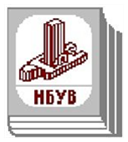CHALLENGES OF REGIONAL SECURITY FOR CENTRAL AND EASTERN EUROPEAN COUNTRIES
DOI:
https://doi.org/10.35774/jee2025.01.041Keywords:
CEE countries, defense budget, EU, EU market, export, import, integration, regional security, risks, trade flows, Visegrad Group.Abstract
The paper analyzes the challenges of regional security for the countries of Central and Eastern Europe (CEE) in the context of modern geopolitical changes, particularly Russian aggression against Ukraine. The impact of security threats on the region’s economic development, trade flows, and political stability is examined. Emphasis is placed on the importance of regional cooperation through formats such as the Visegrad Group, the Lublin Triangle, the Weimar Triangle, and the Bucharest Nine. The article explores changes in the defense budgets of CEE countries, their role in transforming energy policy, and their support for Ukraine. Adjustments in defense spending, made in response to growing security threats, are analyzed. Mechanisms for reorienting trade flows between CEE countries and Ukraine in the context of war are also studied. The authors highlight the importance of Ukraine’s integration into the EU and NATO as a strategic element of European stability. Measures are proposed to strengthen regional cooperation, particularly in the areas of defense, energy, and economic policy. A roadmap has been developed to ensure long-term regional security by enhancing cooperation within the EU and NATO, countering Eurosceptic narratives, and integrating Ukraine into European and Euro-Atlantic structures.
JEL: F02, F10, F15, F42, H56, O52.
References
Amable, D. S. (2022). Theorizing the emergence of security regions: An adaptation for the regional security complex theory. Global Studies Quarterly, 2(4). https://doi.org/10.1093/isagsq/ksac065
Bocka, B. (2022). Security threats and responses in Central Europe. Center for Strategic and International Studies (CSIS).
Bulatova, O., Marena, T., Chentukov, Y., & Shabelnyk, T. (2020). The impact of global financial transformations on the economic security of Central and Eastern European countries. Public and Municipal Finance, 9(1), 1-13. http://dx.doi.org/10.21511/pmf.09(1).2020.01
Chirlesan, G. (2012). The security environment in Central and Eastern Europe: Current status, future prospects. In EIRP Proceedings, 7th Edition of International Conference «The European Integration – Realities and Perspectives», 911-917. https://doi.org/10.13140/RG.2.1.4081.9041
Diplomatic mission of Ukraine to the European Union (2024). Overview of Ukraine-EU Relations [in Ukrainian]. https://ukraine-eu.mfa.gov.ua/posolstvo/ zagalnij-oglyad-vidnosin-ukrayina-yes.
Eurostat (2025). Gross domestic product at market prices – annual data [Dataset]. https://ec.europa.eu/eurostat/databrowser/view/tipsna10/default/table?lang =en&category=tips.tipsgd.
Greminger, T., & Vestner, T. (Eds). (2022). The Russia-Ukraine war’s implications for global security: A first multi-issue analysis. Geneva Centre for Security Policy. https://www.gcsp.ch/sites/default/files/2024-12/gcsp-analysis-russiaukraine-war-implications.pdf.
Hussain, I., Shah, M. N. H., & Tabiullah (2023). The Russia-Ukraine war: An analysis of the geopolitical roots and the global dynamics. Liberal Arts and Social Sciences International Journal (LASSIJ), 7(1), 276-289. https://doi.org/10.47264/idea.lassij/7.1.16
Kamola-Cieślik, M., & Akyesilmen, N. (2024). Energy security policy of Poland and Hungary in the context of the Russian Federation war with Ukraine. A comparative analysis. Rocznik Instytutu Europy Środkowo-Wschodniej, 22(1), 87-104. https://doi.org/10.36874/RIESW.2024.1.5
Kuryliak, V., & Savelyev, Ye. (2020). Development of cooperation between the Visegrad Four and Ukraine in the field of the real economy in the context of the Eastern Partnership [in Ukrainian]. Economics and Management Organization, (3), 229–242. https://doi.org/10.31558/2307-2318.2020.3.20
Kusa, I. (2022). Russia-Ukraine war: Harbinger of a global shift: A perspective from Ukraine. Policy Perspectives, 19(1), 7-12. https://doi.org/10.13169/ polipers.19.1.ca2
Kuznetsova, A. Y., Lyzun, M. V., Savelyev, Y. V., Kuryliak, V. Y., & Lishchynskyy, I. O. (2019). Gravitaty potential for currency alliances’ intrarigional trade. Financial and Credit Activity: Problems of Theory and Practice, 3(30), 236–247. https://doi.org/10.18371/fcaptp.v3i30.179550
Lishchynskyy, I., & Lyzun, M. (2020). Conceptual visions of regional and global security. Herald of Economics, 2(96), 148–161. https://doi.org/10.35774/ visnyk2020.02.148
Lyzun, M., Vitálišová, K., & Borseková, K. (2024). Transformation of trade flows between the EU and Ukraine in the conditions of increasing security risks. Journal of European Economy, 23(2), 289–305. https://doi.org/10.35774/ jee2024.02.289
Mahda, Y. (2024). Geopolitics and the war in Ukraine. In: Z. Cope (Ed.), The Palgrave handbook of contemporary geopolitics, 1-9. Palgrave Macmillan. https://doi.org/10.1007/978-3-031-25399-7_75-1
McGerty, F., & Dewey, K. (2025, February 12). Global defence spending soars to new high [Military Balance Blog]. International Institute for Strategic Studies. https://www.iiss.org/online-analysis/military-balance/2025/02/global-defencespending-soars-to-new-high/
Parakhonskyi, B. O., & Yavorska, G. M. (2024). The Russian war against Ukraine as a trigger for changes in international security: basic narratives: analytical supplement [in Ukrainian]. Kyiv: NISD, 49. https://doi.org/10.53679/NISSanalytrep.2024.02
Rechtik, M., & Mareš, M. (2021). Russian disinformation threat: Comparative case study of Сzech and Slovak approaches. Journal of Comparative Politics, 14(1), 4-19. https://www.jofcp.org/assets/jcp/JCP-January-2021.pdf.
State Statistics Service of Ukraine (2025). Geographical structure of foreign trade in goods with the EU countries. https://ukrstat.gov.ua.
Surwillo, I., & Slakaityte, V. (2024). Power moves east: Poland’s rise as a strategic European player [DIIS Policy Brief]. Dansk Institut for Internationale Studier. https://pure.diis.dk/ws/files/25360396/DIIS_PB_Poland_2024_WEB-pakke.pdf.
Tampubolon, M. (2022). Russia’s invasion of Ukraine and its impact on global geopolitics. European Scientific Journal, 18(20), 48. https://doi.org/ 10.19044/esj.2022.v18n20p48
Tskhovrebadze, T., Putkaradze, K. & Zerekidze, Z. (2023). Rethinking European security: The strategic nexus after Russian-Ukraine war. Journal of Liberty and International Affairs, 9(3), 518-530. https://doi.org/10.47305/ JLIA2393629t
Warsaw Security Forum (2023). Central and Eastern Europe (CEE) as a new center of gravity: Recommendation on strengthening regional, European and transatlantic security [Warsaw Security Forum Report 2023]. https://warsawsecurityforum.org/wp-content/uploads/2023/09/WSF2023_ raport_20-09_WEB.pdf.
World Bank Group (2025). World Bank Open Data. https://data.worldbank.org/.
Zięba, R. (Ed.). (2023). Politics and security of Central and Eastern Europe. Springer International Publishing. https://doi.org/10.1007/978-3-031-16419-4
Received: January 17, 2025.
Reviewed: January 31, 2025.
Accepted: February 27, 2025.
Downloads
Published
How to Cite
Issue
Section
License
Authors who publish with this journal agree to the following terms:
- Authors retain copyright and grant the journal right of first publication with the work simultaneously licensed under a Creative Commons Attribution License that allows others to share the work with an acknowledgement of the work's authorship and initial publication in this journal.
- Authors are able to enter into separate, additional contractual arrangements for the non-exclusive distribution of the journal's published version of the work (e.g., post it to an institutional repository or publish it in a book), with an acknowledgement of its initial publication in this journal.
- Authors are permitted and encouraged to post their work online (e.g., in institutional repositories or on their website) prior to and during the submission process, as it can lead to productive exchanges, as well as earlier and greater citation of published work (See The Effect of Open Access).








